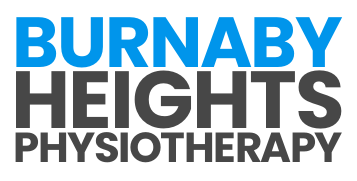Burnaby Heights Physiotherapy, a leading Burnaby clinic, offers personalized treatment for shoulder labrum injuries, prioritizing effective recovery with advanced care techniques.
Understanding Shoulder Labrum Tears
The labrum is a piece of fibrocartilage attached to the rim of the shoulder socket that helps keep the ball of the joint in place. A tear in this cartilage can result from acute injury or repetitive shoulder motions, leading to pain, instability, and limited range of motion.
Prevalence and Impact
Shoulder labrum tears are a common injury among athletes, particularly those who engage in sports that require overhead motions like baseball, swimming, or weightlifting. However, non-athletes can also suffer from labrum tears due to accidents or wear and tear over time.
How It Affects Your Life
A tear in the shoulder labrum can significantly impact your daily life, causing pain during everyday activities, reducing your range of motion, and diminishing your strength. It can also lead to a feeling of instability in the shoulder, making it difficult to trust your arm in both sports and daily tasks.
Common Symptoms
Recognizing the symptoms of a shoulder labrum tear is the first step toward treatment. Common symptoms include:
- A sharp pop or clicking sensation in the shoulder.
- Pain when performing certain movements or lifting.
- A sense of locking, grinding, or catching in the shoulder joint.
- Decreased range of motion and loss of strength.
Tailored Treatment at Burnaby Heights Physiotherapy
Our approach to treating shoulder labrum tears at Burnaby Heights Physiotherapy is centred around personalized care and the latest treatment modalities.
Comprehensive Assessment
Treatment begins with a comprehensive assessment to understand your specific condition, including the type of labrum tear and your activity level, to tailor a treatment plan that meets your personal needs and goals.
Personalized Rehabilitation Programs
Depending on the severity of the tear and your individual needs, treatment options may include:
- Physiotherapy: Focused on strengthening the muscles around the shoulder to stabilize the joint and increase range of motion.
- Manual Therapy: Techniques to improve joint mechanics and reduce pain.
- Pain Management: Strategies to manage pain and inflammation, including ice and heat.
Recovery and Prevention
Our goal is to not only help you recover from a shoulder labrum tear but also to implement strategies to prevent future injuries. This includes education on proper techniques for sports and daily activities, as well as exercises to maintain shoulder health and stability.
Our Broad Range of Services
At Burnaby Heights Physiotherapy, we offer a wide range of services to address various musculoskeletal issues, ensuring a holistic approach to your health and recovery.
- Physiotherapy Clinic
- Acupuncture Treatment
- Registered Massage Therapy
- Certified Hand Therapy
- Intramuscular Stimulation Therapy
- Shockwave Therapy
- Concussion Treatment
- Vestibular Physiotherapy
Why Choose Burnaby Heights Physiotherapy for Shoulder Care
Choosing Burnaby Heights Physiotherapy means opting for a clinic that combines expertise, compassion, and the latest in physiotherapy advancements to provide you with the best possible care for your shoulder labrum tear.
Our Commitment to You:
- A team of skilled professionals dedicated to your recovery.
- State-of-the-art treatment techniques.
- A comprehensive, client-centered approach to care.
Start Your Shoulder Labrum Tear Recovery Journey
If you’re suffering from a shoulder labrum tear, don’t let it hold you back any longer. Contact Burnaby Heights Physiotherapy in Burnaby today to schedule an appointment. Our expert team is ready to support you through a personalized treatment plan designed to get you back to your active lifestyle without pain.
Personalized Care for Common Shoulder Conditions
|
|
Shoulder Labrum Tear Treatment Burnaby FAQs
What Is the Recovery Time for a Shoulder Labrum Tear?
Recovery time from a shoulder labrum tear varies significantly based on the treatment method, the severity of the tear, and the individual’s adherence to their rehabilitation program. Non-surgical treatments may see individuals beginning to feel better within a few weeks, but full recovery can take several months. For surgical repairs, recovery can take anywhere from 4 to 6 months, with a return to full sports participation potentially taking up to a year. Each individual’s recovery timeline is unique, and ongoing physiotherapy plays a crucial role in successful rehabilitation.
Can Shoulder Labrum Tears Heal on Their Own?
Shoulder labrum tears have a limited ability to heal on their own due to the labrum’s poor blood supply, which is crucial for natural healing. While the pain and symptoms may improve over time with rest and physiotherapy, these approaches are more about managing symptoms and improving shoulder function than actual healing of the tear.
What Activities Should I Avoid With a Shoulder Labrum Tear?
If you have a shoulder labrum tear, it’s essential to avoid activities that exacerbate your symptoms or put you at risk for worsening the tear. These typically include overhead activities, heavy lifting, and sports that involve throwing or repetitive arm movements. Activities that involve sudden movements or forceful arm use, such as swinging a bat or racket, should also be avoided. During your recovery, focus on gentle exercises and movements recommended by your physiotherapist. They will guide you on safely increasing your shoulder activity level without risking further injury.
How Can I Prevent a Shoulder Labrum Tear?
Preventing a shoulder labrum tear involves maintaining shoulder strength, flexibility, and stability through regular exercise and proper technique in sports and daily activities. Incorporating shoulder-strengthening exercises into your routine can help support the joint and reduce the risk of tears. Paying attention to body mechanics and avoiding repetitive overhead movements can also mitigate risk. For athletes, proper warm-ups, using correct sports techniques, and listening to your body to avoid overuse are key. Regular check-ups with a physiotherapist can help identify and address any imbalances or weaknesses before they lead to injury.
Burnaby Heights Physiotherapy
3970 Hastings St #210, Burnaby, BC V5C 6C1, Canada
604 – 294 – 3911
Hours:
Monday to Friday: 7:00 AM – 8 PM
Saturday: 7:00 AM – 2:00 PM
Sunday: Closed


